10 Facts about the Humanitarian Crisis in Ukraine
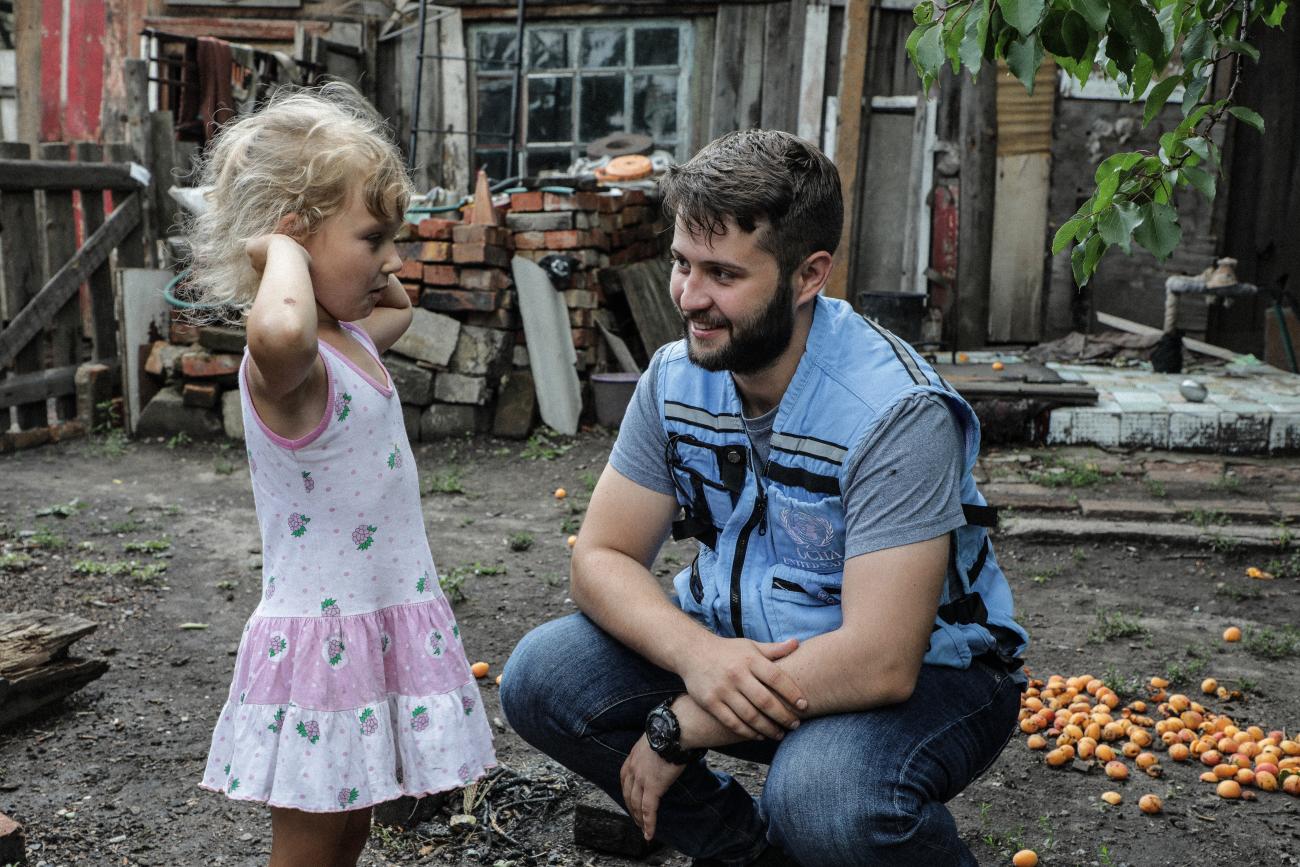
On World Humanitarian Day OCHA Ukraine shows the lives of people in Donbas, Ukraine.
For six years, people in Donbas, Ukraine have been living in fear. Fear of the physical violence caused by the conflict surrounding them. Fear about whether or not they will earn enough money or be able to access pensions to support themselves. Fear of living close to the ‘contact line’, which is littered with landmines and other explosives. And now, fear of a virus that has wreaked havoc on the world and threatens to intensify all the challenges associated with a humanitarian crisis.
More than 10,000 civilians have been killed or injured and 1.4 million people have been registered as internally displaced as a result of Europe’s deadliest conflict in the past two decades. Already enduring so much, the COVID-19 pandemic has only intensified the challenges faced by people living in this conflict-affected part of Ukraine. Some 3.4 million people are in need of humanitarian assistance, with that number projected to rise due to the global COVID-19 pandemic and associated economic impacts.
Despite the ongoing conflict, the humanitarian response in eastern Ukraine has been consistently underfunded for the past five years. As a result, humanitarian actors are unable to ensure that people in urgent need of assistance receive the support they require. In 2020, only 28 per cent of humanitarian funding needed for this year alone has been provided. The humanitarian community urgently needs another US$149 million to respond to the humanitarian and health crises and support vulnerable people living in conflict-affected areas.
1. RECENTLY NEGOTIATED CEASEFIRE GIVES HOPE TO CONFLICT-AFFECTED PEOPLE CAUGHT BETWEEN A HUMANITARIAN AND HEALTH CRISIS
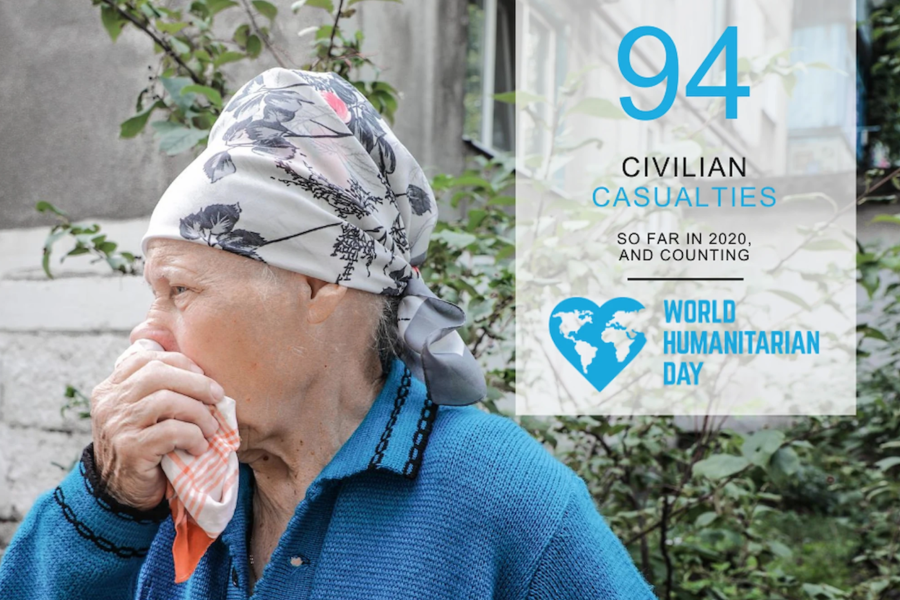
Now in its seventh year, the conflict in eastern Ukraine has resulted in 94 civilian casualtiesin 2020 alone, with active fighting persisting even through the early stages of the pandemic. Shelling, landmines, and explosive remnants of war have been a daily reality for those who remain in conflict-torn areas. Communities close to the ‘contact line’, in particular, live in a heightened state of fear. The stress associated with the conflict has been further exacerbated by the COVID-19 pandemic and related quarantine restrictions, which have limited people's ability to cross the ‘contact line’, access basic services, markets, and receive the humanitarian aid they normally rely on. In July, following several months of negotiations, a ceasefire agreement was finally reached, and if adhered to, could bring a much-needed sense of peace and relief to civilians living in conflict-affected Ukraine.
2. FAMILIES HAVE BEEN TORN APART BY A 420-KM ‘CONTACT LINE’
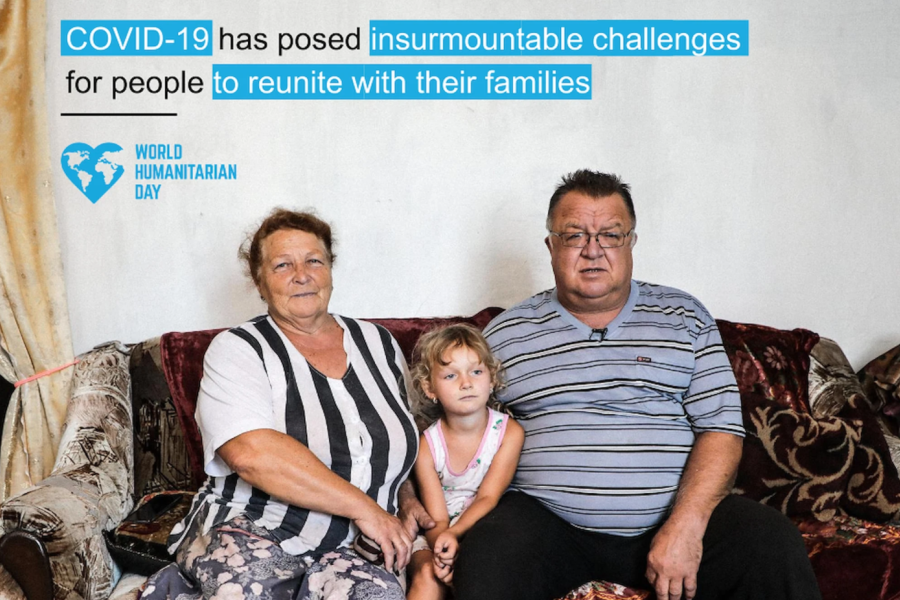
Families residing on either side of the ‘contact line’ – a 420-kilometer barrier dividing territory under and outside of Government-control – have been arbitrarily separated. The ‘contact line’ and surrounding area has moved several times since 2014 and remains a contentious zone where violence can be easily provoked. In order to cross from one side to another, civilians must pass through one of five crossing points. Prior to the COVID-19 pandemic, these points were crossed on average 1.2 million times each month. Since they were closed in late March as part of efforts to curb the spread of the virus, the number of crossings has declined steeply to just a few thousand on average per month, with priority given to people who have been granted humanitarian exemptions. Those not granted access have been left stranded on either side of the line, posing insurmountable challenges for them to return home or access services they depend on. Many families have been separated for months on end, with no certainty of when they will be reunited.
3. HIGHEST PROPORTION OF ELDERLY AND PERSONS WITH DISABILITIES AFFECTED BY A HUMANITARIAN CRISIS GLOBALLY
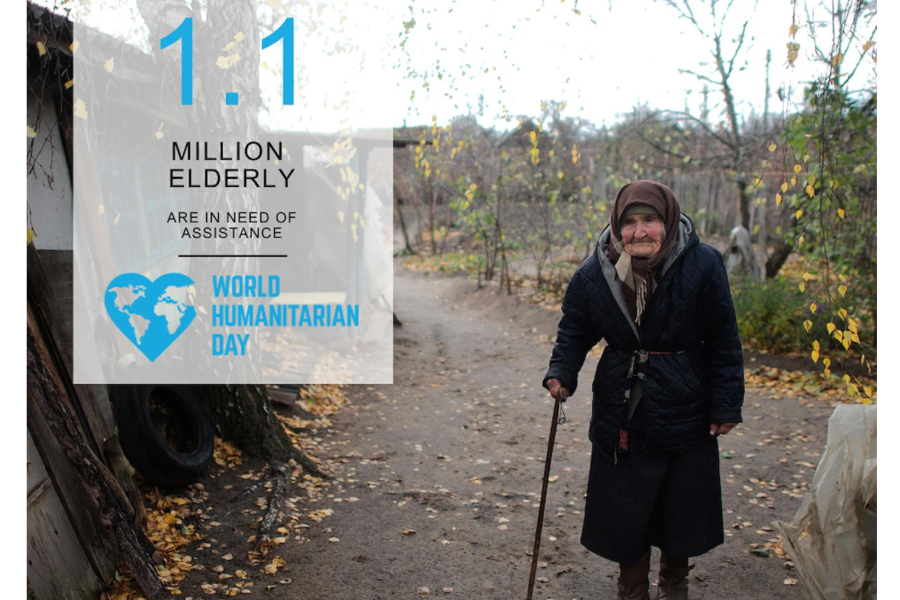
The elderly and persons with disabilities account for more than 30 percent of the people living in conflict-affected Ukraine, the highest percentage of this demographic in current humanitarian crises worldwide. Many younger people and those without disabilities have migrated to other parts of Ukraine, leaving behind people with disabilities or those who are too old to re-establish their life elsewhere. The conflict has further isolated already rural communities. Of some 70,000 people living in settlements in areas controlled by the Government, which are isolated and cut off from basic services due to insecurity and damages to road infrastructure, more than 40 per cent are elderly and 13 per cent have disabilities. People in these communities, especially those with limited mobility, rely on humanitarian actors to provide basic services, such as mobile medical care, that they could not survive without.
4. HUNDREDS OF THOUSANDS OF PEOPLE HAVE LOST ACCESS TO THEIR PENSIONS
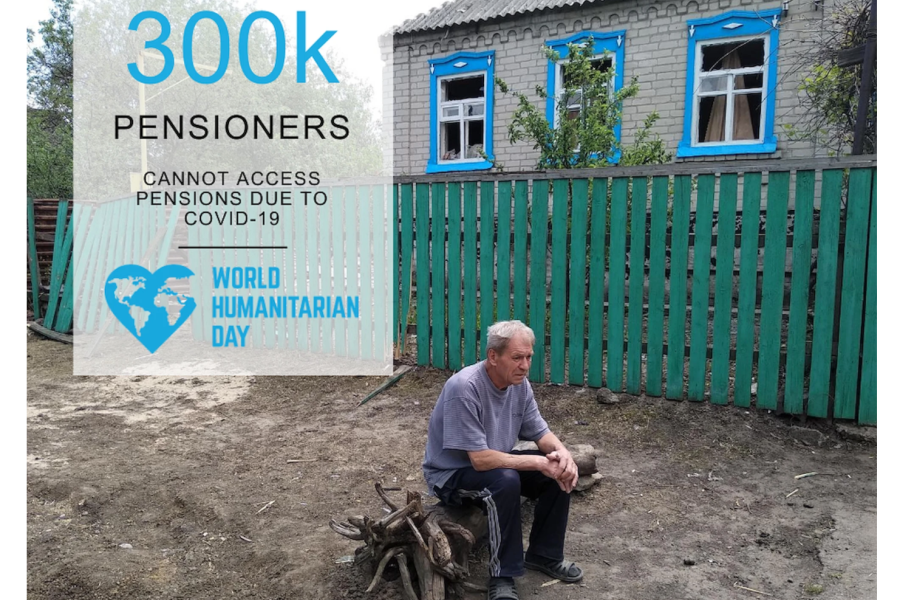
Most elderly people in Ukraine rely on monthly pension payments to meet their basic needs. However, pension payments can only be accessed from banks in areas under Government-control -- posing significant challenges for pensioners living in areas across the ‘contact line’. Due to bureaucratic constraints imposed by the conflict, since 2014, some 700,000 people from areas beyond Government control have lost access to their pensions – more than half of all pensioners registered there at the time. The closure of the ‘contact line’ in March due to COVID-19 has worsened the situation, as most people have been unable to cross to the Government-controlled side, where they receive the payments. This has left at least 300,000 people without access to their pensions. With no definitive end in sight for COVID-19-related restrictions, hundreds of thousands of elderly people could be living without their main source of income for many months to come. Humanitarian assistance has consequently become a vital lifeline for people in this vulnerable situation.
5. IN CONFLICT-TORN AREAS, COVID-19 PUTS AN ADDITIONAL STRAIN ON PEOPLE’S MENTAL HEALTH
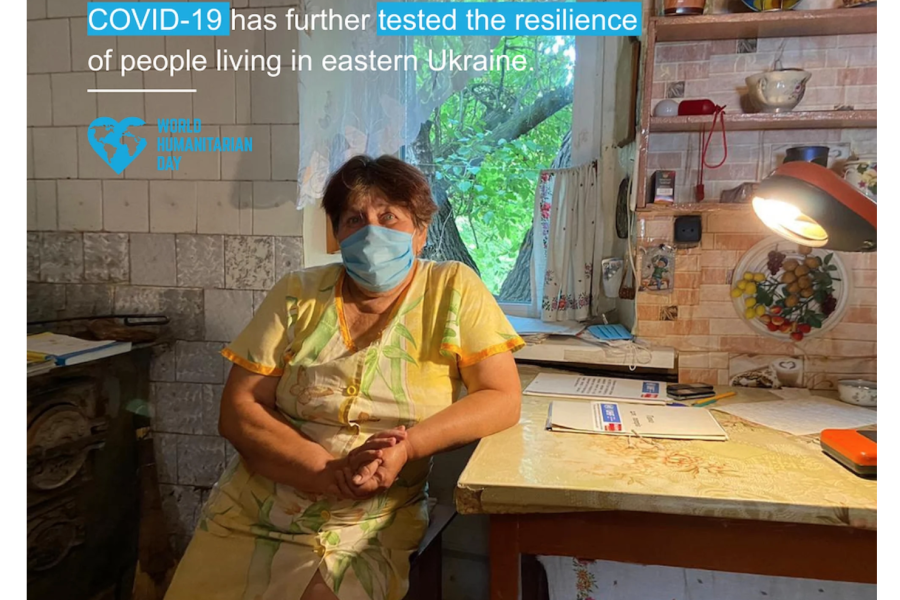
Suffering from the impacts of more than six years of armed conflict, the COVID-19 pandemic has further tested the resilience of people living in eastern Ukraine. The healthcare system and psychosocial support services, which prior to the pandemic lacked sufficient resources and personnel, have been strained by the demands of the current crisis. Almost 40 per cent of residents in Donetska and Luhanska oblasts have experienced stress, depression, anxiety and post-traumatic stress disorder. This figure has likely increased due the pandemic and related restrictions. Moreover, the economic fallout from the pandemic in Ukraine is likely to be severe, with the conflict-affected areas in the east most severely impacted. The additional financial strain will further aggravate mental health issues and cause more suffering.
6. SHELLING INCIDENTS HAVE DISRUPTED ACCESS TO CLEAN WATER FOR MILLIONS OF PEOPLE
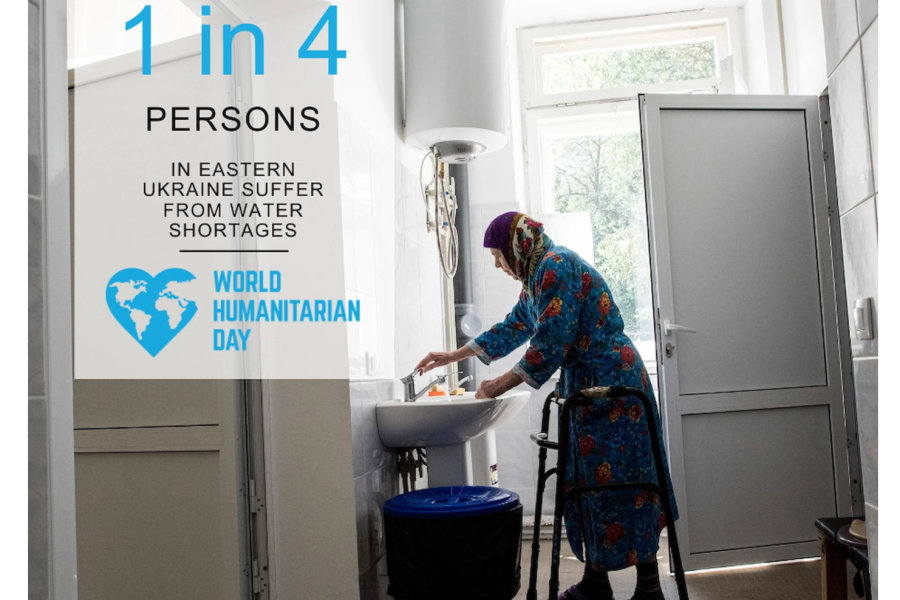
Civilian infrastructure has been hard-hit by the conflict, with many water and sanitation facilities damaged by shelling, affecting water systems for up to 4.2 million people. Workers from Voda Donbasu, a water utility company operating in eastern Ukraine, have become unlikely heroes, risking their lives to repair the facilities and restore access to water for hundreds – sometimes millions – of people. Nevertheless, one in four people living near the ‘contact line’ suffer from water shortages, posing challenges for everyday life and sanitation measures needed to contain the spread of COVID-19.
7. CONFLICT HAS LED TO A SHARP DECLINE IN ECONOMIC ACTIVITY IN FORMER “INDUSTRIAL HEARTLAND”
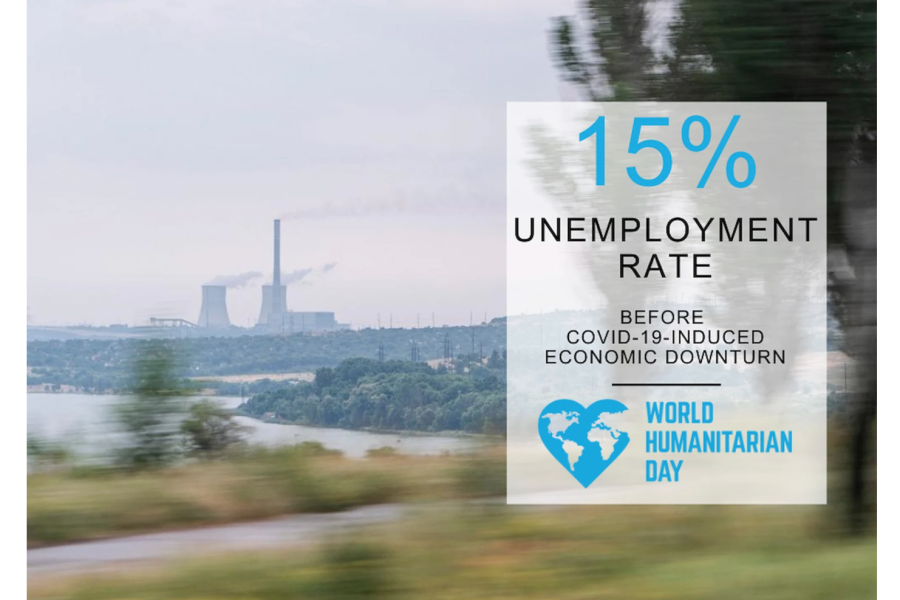
As the epicenter of Ukraine’s coal-mining industry, Donbas has historically been considered the country’s ‘industrial heartland’. However, over the course of six years of conflict, the economic situation there has inevitably deteriorated as people have moved away and infrastructure has been damaged. Jobs have disappeared as investments in the region have dried up, leaving people in the conflict-torn part of the country with little economic security. The pandemic has only worsened the situation. The national unemployment rate is expected to rise to 12 per cent this year, while the unofficial unemployment rate could be as high as 15 per cent. Eastern Ukraine will likely be worse off compared to the rest of the country, as prior to the global health crisis, the official unemployment rate in Government-controlled areas was already 15 per cent -- twice the national average.
8. EASTERN UKRAINE IS ONE OF THE MOST MINE-CONTAMINATED AREAS IN THE WORLD
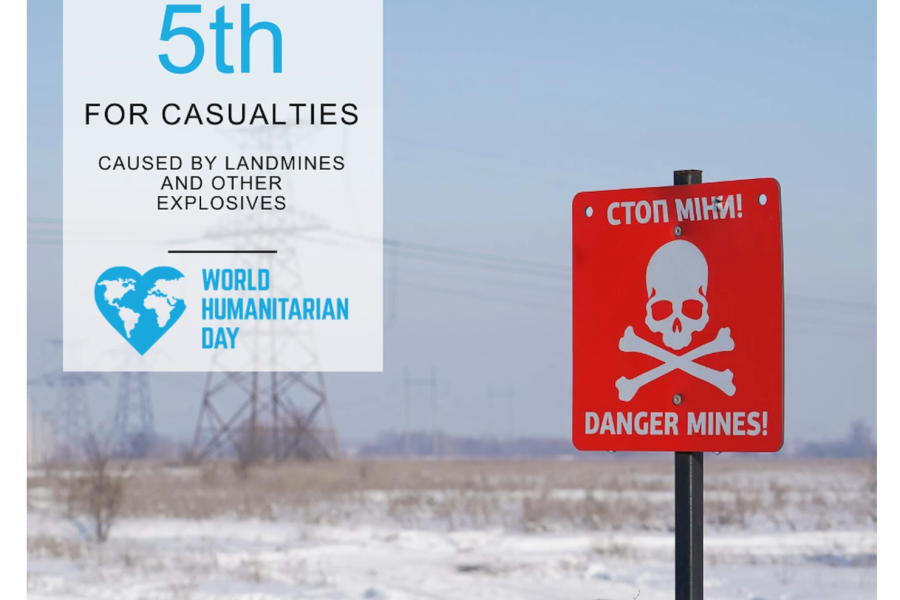
With more than two million people living in mine-contaminated areas, Ukraine ranks fifth worldwide for casualties caused by landmines and other explosives, behind Afghanistan and Syria. Since 2014, more than 2,000 civilians have lost their lives or been injured by landmines and explosive hazards. In 2019, landmines accounted for some 35 per cent of civilian casualties and every second child casualty. The presence of landmines continues to pose a significant threat to the lives of women, men, and children living close to the ‘contact line’, preventing them from reaching hospitals, markets and schools and leaving people in a constant state of fear.
9. NEARLY HALF A MILLION YOUTH ARE GROWING UP SURROUNDED BY VIOLENCE AND ARE AT RISK OF LOSING ACCESS TO EDUCATION DUE TO COVID-19
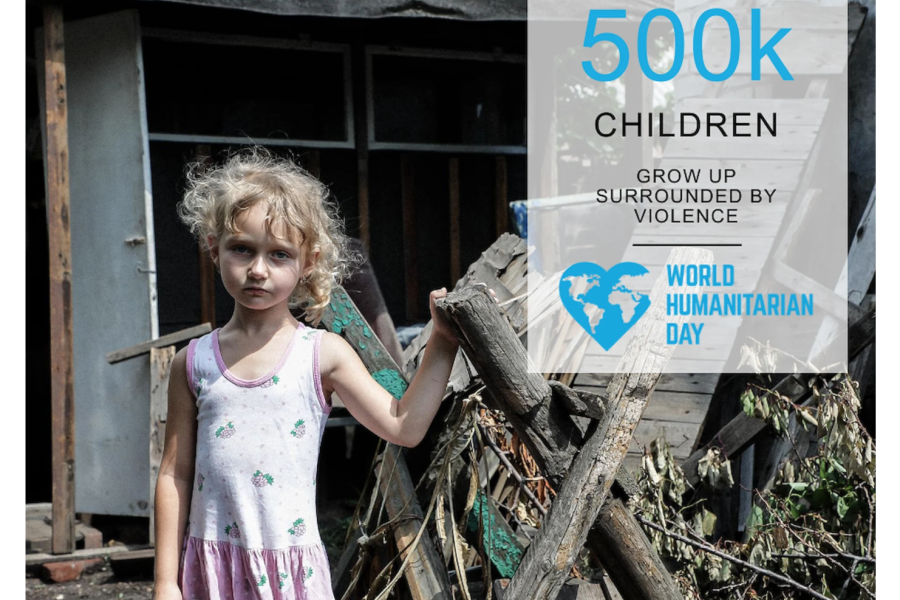
With more than 500,000 children in need of humanitarian assistance in eastern Ukraine, ageneration is growing up surrounded by violence and fear. Since the conflict began in April 2014, more than 530 children have been killed or injured. Children under the age of six have only ever known their communities in a state of crisis. Beyond the threat of physical violence, the conflict has also compromised children’s futures in eastern Ukraine by hampering access to education. Educational facilities have become unintended targets, with more than 750 facilities hit by shelling since 2014. The COVID-19 pandemic has only imposed further constraints to accessing education, causing the largest disruption of education systems in history, with up to 1.6 billion learners impacted globally. As educational facilities have been forced to shift to online learning to prevent the spread of the virus, children whose families lack reliable Internet access, or the required technological resources, have been left behind. This has intensified pre-existing educational disparities and challenged children’s fundamental right to education worldwide, including in eastern Ukraine. While COVID-19 poses significant obstacles for the education system in eastern Ukraine, it also provides a window of opportunity to reinvest in education and adopt more inclusive, equitable, and resilient approaches to learning.
10. THE HUMANITARIAN COMMUNITY CONTINUES TO ADVOCATE FOR IMPROVED ACCESS TO BOTH SIDES OF THE ‘CONTACT LINE’ FOR CIVILIANS AND HUMANITARIAN WORKERS DURING THE PANDEMIC
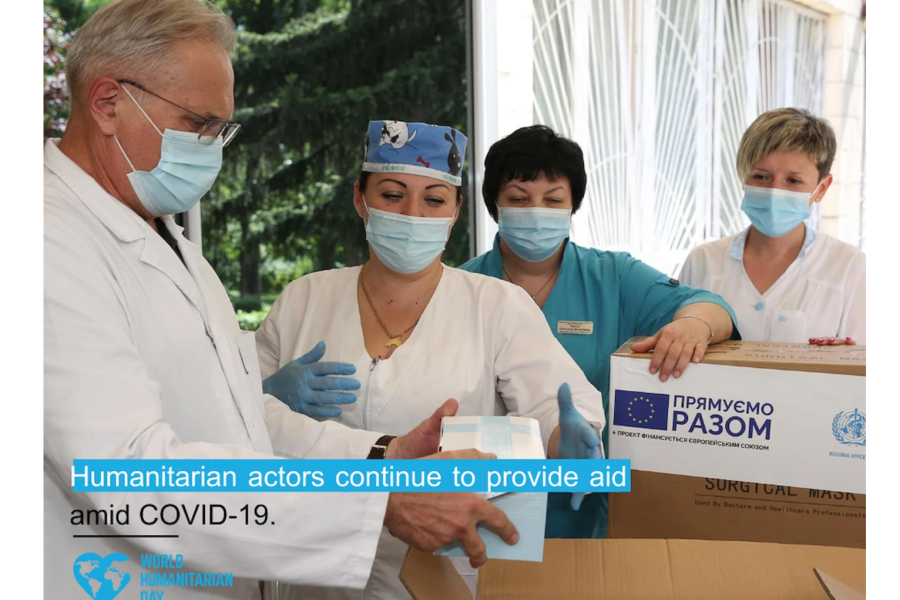
Despite the physical and financial barriers to providing relief in eastern Ukraine, humanitarian actors continue to find ways to deliver much-needed support to conflict-affected people. The humanitarian community has been actively working to not only enhance its presence but improve access to civilians to meet their acute needs. Established humanitarian exemptions now allow people in dire need to cross the ‘contact line’ to reach essential services, reunite with family, or attend the funerals of loved ones. Humanitarian actors have even delivered aid by foot when vehicular convoys were not allowed to cross. Humanitarians have stepped up to provide aid to people not only affected by the conflict, but also to those suffering from the impacts of the global health crisis and recent forest fires in the region. More than ever before, conflict-affected civilians count on humanitarian aid to survive. Yet, humanitarians can only do as much as support from donors will allow. Anyone can support the humanitarian action in eastern Ukraine. Every contribution counts.
You can donate here.
Written by





